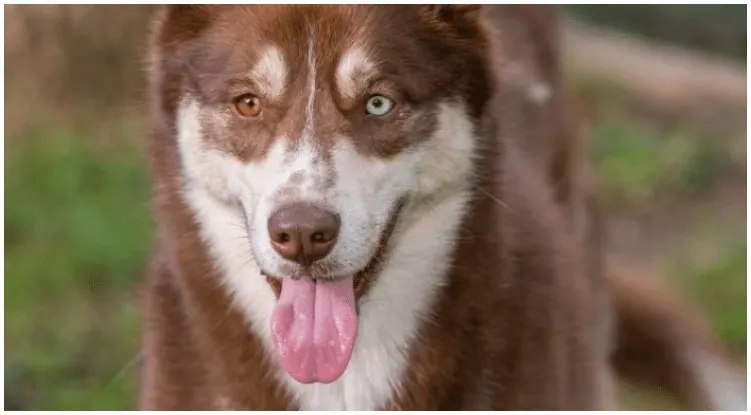We already all know and love our Huskies. But did you know that there is a super rare variation of the Husky with beautiful chocolate brown fur?! There aren’t a separate dog breed, but just one of their color variations. A very rare one, may we add. If you’re keen to learn more about the brown Husky — keep on reading!
Husky — Basic breed info
We already all know that huskies have beautiful eyes and a pretty, thick fur with many other exciting physical features. They have a very loving, sweet, open nature. Also, they are always cheerful and in a good mood. These are lively dogs,mespecially love to go on long walks and exciting hikes. They also have a naughty side to them — They adore to dig around your yard and chew a bit on your furniture. Huskies are also notorious as “outbreak artists”. It almost seems as if they – like the great unleashing and magician Harry Houdini – can escape everywhere. That sounds funny at first, but there are too many roads and too many cars – so you should pay close attention to unsecured doors and check fences for gaps.
Brown Husky — Are they rare?
They are pretty rare, actually! We already know our black and white, silver and white or cream and white Husky combination. But Huskies can also be brown and white, or even all brown.
Brown is a recessive color in Huskies. That means that dogs have to carry two copies of the gene in order to have it expressed. That’s why they are so hard to find.
Education and training of the Brown Husky
Huskies are extremely friendly, open-minded and obedient dogs, but their training requires a lot of skill and experience. They like to test their limits, so it is important not to give in, but to make it clear calmly and definitely who is the “pack leader”. This requires a lot of discipline! So huskies are more for experienced dog owners.
Sports and activities Huskies enjoy are: Hiking, cycling, jogging.
Pros of getting a Brown Husky
- Easy to educate
- Gets along well with other dogs
- Doesn’t drool
- Good for sporty people
- The brown Husky is unique
Cons of getting a Brown Husky
- No “beginner” dog
- Howls a lot
- Needs a lot of exercise
- Not a good guard dog
- Doesn’t get along well with small animals
Appearance of the Brown Husky
The brown Husky is pretty much the same size and weight as the regular Husky. The only difference really is that his coat is brown. Or sometimes part brown part white.
Not all brown huskies have blue eyes. They can also have brown eyes – or a blue and a brown one! How beautiful would that be? A brown Husky with brown eyes.
While it is possible that your Husky will be all brown, the part white part brown combination is more common. They usually have white fur on the paws, legs, face and tip of the tail.
Grooming
Twice a year, huskies lose a lot of hair when changing coats. Otherwise, however, they are in the midfield. His fur should be brushed well at least once a week.
Don’t forget to clean his ears, brush his teeth and clip his nails!
Fun fact: Husky the lifesaver
Because they can cope with colder temperatures due to their warm fur, they were used by the Eskimo as sled dogs. The following heroic story proves how great their physical and mental endurance is.
In 1925, diphtheria broke out in a city in northwest Alaska – a contagious, life-threatening infectious disease. The city was snowed in, so only dog sleds had a chance to reach them. Within just under 6 days, various dog sled relays covered 1085 km to bring the life-saving serum to the city. At -46 to -65 degrees Celsius! In addition, they also had to struggle with strong winds and snowfall, which is why dogs and humans could hardly see anything.
Husky Balto, the guide dog on the last section of the route, became particularly famous in that period. Even on the most difficult and longest route (146 km in a row), a husky was the guide dog. Without the extraordinary sense of orientation and smell of Balto, the sled dog guide would never have reached the stage goal.
History
At the beginning of the 20th Century, Huskies came from Siberia to Alaska. It is believed that their name was originally Esky, as a nickname for the Eskimos dogs. This eventually became a husky.
Today, Huskies are one of the most popular dog breeds that is out there, and rightfully so!
The particular history of the Brown Husky is pretty unclear. But due to the fact that the brown gene is recessive, many people believe that it’s actually a mutation. But a pretty beautiful one, isn’t it?
Did you know?
Huskies hardly bark. They like to whine instead of that. You should definitely know that! Because that whining will become part of your day to day life. Trust us, your ears will get so used to it that you won’t even mind!
Similar dog breeds you might like:
- German Shorthaired Pointer
- Samoyed
- Australian Shepherd

